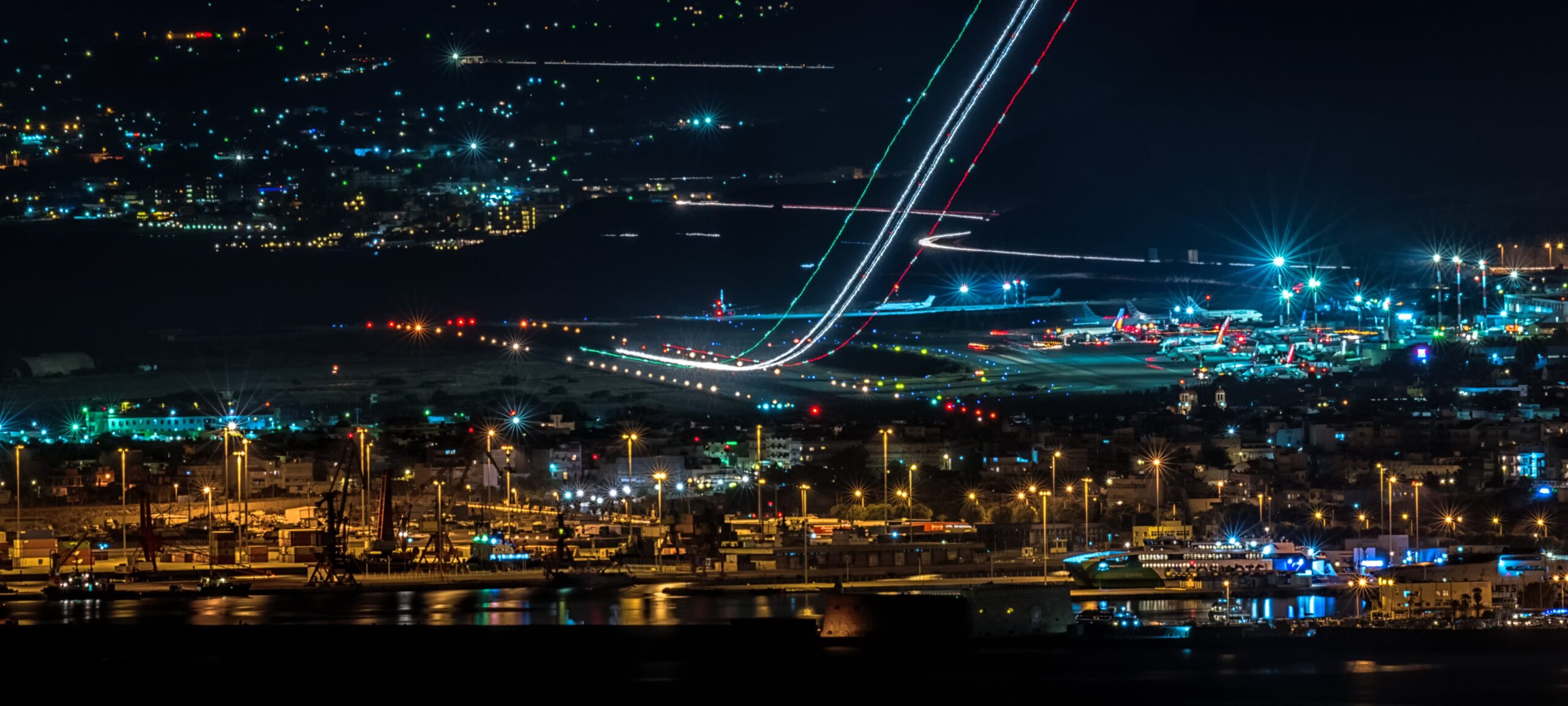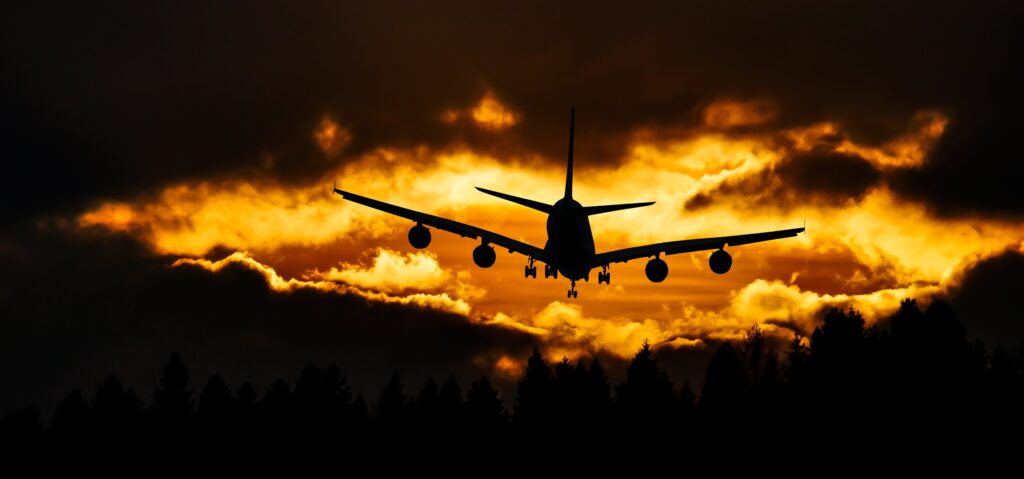Which Flights Have the Most Turbulence? Analyzing Air Travel Patterns

In most turbulence, which is the irregular motion of air resulting from various atmospheric phenomena, is a common experience for air travelers. While it is a routine part of flying and modern aircraft are designed to withstand it, turbulence can vary in intensity and cause discomfort among passengers. Flight routes over certain areas, such as mountain ranges, oceans, and equatorial regions, are more prone to experiencing turbulence due to the complex interplay of air masses and weather patterns.
Pilots and airlines are well-versed in understanding the factors contributing to turbulence and often adjust flight plans to mitigate its effects. Flights over the North Atlantic, for instance, often encounter the jet stream, a high-speed air current that can cause bumpy conditions. Similarly, flying over mountainous areas such as the Rockies or the Andes, air traffic can be subjected to sudden changes in airflow, leading to rough rides.
It is important for passengers to understand that turbulence is a normal and expected part of flying. Aircraft are equipped with technology to detect and predict turbulence, allowing pilots to either avoid it or inform passengers in a timely fashion to minimize anxiety and ensure safety. Despite its sporadic nature, airlines continuously monitor and analyze reports to provide the smoothest possible flying experience for travelers.
Understanding Most Turbulence Experiences

Turbulence is an irregular motion of air resulting from eddies and vertical airflow, which passengers on an aircraft might experience as sudden jolts or bumps. It is an important aspect of aerial travel that both pilots and passengers may encounter.
Physical Causes of Turbulence
The phenomenon of turbulence stems from the chaotic and unpredictable movement of air in the Earth’s atmosphere. The principles of fluid mechanics play a crucial role in this, as air acts very much like a fluid. Turbulence can occur when the smooth laminar flow of air is disrupted and transformed into irregular and swirling patterns known as eddies. This can happen due to several reasons:
- Obstructions: When an aircraft flies over mountain ranges or tall buildings, the natural flow of air can be disrupted, leading to mechanical turbulence.
- Thermal Variances: Air at different temperatures can create thermal turbulence when warm, less dense air rises through the cooler, denser air above.
Flight Routes and Turbulence Patterns
Aircraft routes often intersect with two major phenomena that can affect turbulence: the jet streams and the intertropical convergence zone (ITCZ), which are influenced by the Earth’s rotation and solar heating:
- Jet Streams: These narrow bands of strong winds at high altitudes, typically found near the altitudes where commercial jets fly, often lead to clear-air turbulence.
- Intertropical Convergence Zone (ITCZ): This is a belt of low pressure which encircles the Earth near the equator where the northeast and southeast trade winds converge, often causing convective turbulence.
By monitoring these weather patterns, pilots can predict and manage turbulence to a certain extent, although complete avoidance is not always possible, particularly during altitude change, which may lead to unexpected environmental interactions.
Global Hotspots for Air Turbulence

Air turbulence is a commonly experienced phenomenon, influenced by various geographical regions and prevalent weather patterns. This section will discuss three major areas that tend to experience heightened turbulence: mountainous regions, the equator, and specific flight paths known for their rough conditions.
Mountainous Regions and Turbulence
Mountain ranges such as the Alps, Andes, Rockies, and the Tibetan Plateau are notorious for causing turbulent air conditions. The Rocky Mountains, for example, contribute to what pilots refer to as “mountain wave turbulence” due to the air flow interruptions created by the massive peaks.
- Alps: Sudden wind changes and strong currents can lead to moderate or severe turbulence.
- Andes: One of the longest mountain ranges in the world, its high elevations affect atmospheric stability, often resulting in turbulence.
- Rockies: Known for “mountain wave turbulence,” especially during the winter months.
- Tibet: The Tibetan Plateau, with its immense elevation, can create significant temperature gradients contributing to instability.
- Pyrenees: Although less discussed, still requires attention for potential turbulence when flying overhead.
Equatorial Challenges
The areas around the equator can be turbulent due to the Intertropical Convergence Zone (ITCZ), where trade winds meet and create thunderstorms and other weather disturbances. The ITCZ’s position changes with the seasons, which can impact flight routes for consistency in turbulence encounters.
Known Turbulent Flight Paths
Certain flight paths have developed a reputation for experiencing consistent turbulence.
- New York to London: Crossing the North Atlantic, where the jet stream can cause considerable turbulence.
- Seoul to Dallas: Flights crossing the Pacific can run into rough weather patterns and jet stream disturbances.
- London to South Africa: Passing over the equator and turbulent Atlantic zones can lead to rough flights.
Understanding these hotspots is essential for pilots and airlines when planning routes to minimize passenger discomfort and ensure safety during flights.
Meteorological Influences on Turbulence

Turbulence experienced by flights is often a direct result of meteorological conditions. Variations in seasonal weather, wind and storm systems, as well as interactions between air masses contribute significantly to these turbulent episodes.
Seasonal Weather Variations
The frequency and intensity of turbulence can be influenced by seasonal weather shifts. For instance, summer typically brings convective turbulence due to thermal updrafts, while winter can prompt stronger jet streams, which enhance wind shear-related turbulence at cruising altitudes.
- Monsoons: The seasonal monsoon systems, especially in Asian regions, result in significant changes in wind patterns, which can increase instances of turbulence.
- Thunderstorms: Warmer seasons see higher occurrences of thunderstorms, which are often accompanied by erratic and turbulent winds.
Wind and Storm Systems
Wind patterns and storms are primary factors causing turbulence. They create areas of differential air movement that can be severe and unexpected.
- Jet Streams: High-altitude air currents with significant wind speeds are known to produce clear-air turbulence.
- Hurricanes/Typhoons: The intense wind circulation around these large storms generates powerful turbulence, especially along the edges of the systems.
- Thunderstorms: Associated with strong up-and-down drafts, thunderstorms can cause some of the most severe instances of in-flight turbulence.
Air Mass Interactions
When different air masses collide, the interface between them can be turbulent. Temperature differences contribute to the formation of turbulence as warm air rises and cold air sinks, creating unstable air flows.
- Frontal Boundaries: At the boundary where warm and cold air masses meet, significant turbulence can occur due to rapid changes in wind direction and speed.
- Mountain Waves: When stable air flows over mountain ranges, it can lead to oscillating patterns of airflow known as mountain waves, capable of producing turbulence well downstream of the mountains.
Turbulence Impact on Air Travel

Turbulence is an unavoidable aspect of air travel, often leading to flight experience variations, necessitating flight route adjustments, and raising concerns about passenger and crew safety.
Flight Experience
Turbulence can significantly affect passengers’ comfort and flight experience. An increase in severe turbulence incidents can cause emotional distress and physical discomfort for passengers. The eddy dissipation rate (EDR) is a quantifiable measure used to categorize turbulence intensity. When EDR values indicate moderate or severe turbulence, passengers are more likely to experience jolts and unexpected movements during the flight, often leading to increased anxiety levels.
Flight Route Adjustments
In response to turbulent conditions, airlines may alter flight routes to ensure safety and minimize exposure to rough air. Flight planners and pilots analyze weather patterns, including anticipated turbulence, to plot alternative trajectories. This can result in longer flight times and, potentially, higher fuel consumption. Diversions to avoid turbulent areas can also lead to increased traffic in certain airspaces, requiring coordination between airports and airlines to manage the flow of affected flights.
Passenger and Crew Safety
Safety is the paramount concern when dealing with turbulence. It is critical for the crew to enforce seat belt regulations during flights to mitigate the risk of injury due to sudden turbulence. Passengers are encouraged to keep their seat belts fastened even when the sign is off as unexpected turbulence, sometimes termed “clear-air turbulence,” can occur without visual cues such as clouds. Airlines train their crew to handle turbulent flight routes and execute procedures to maintain their own safety while assisting passengers. Despite these measures, severe turbulence remains one of the leading causes of in-flight injuries, which has led to ongoing research and advancements in detection and response strategies.
Analyzing Turbulence Data

Turbulence, a common concern for flyers, is often measured by its intensity and predicted by technological advancements in detection.
Quantifying Turbulence Intensity
Eddy dissipation rate (EDR) is the primary metric used to quantify turbulence intensity. This unit measures the rate at which air turbulence dissipates energy and is crucial for evaluating flight smoothness. Pilots and air traffic controllers use EDR values to classify turbulence severity, with higher rates indicating more intense turbulence. Accurate measurements of EDR are essential to ensure passenger comfort and flight safety.
Technological Tools for Turbulence Detection
Advancements in technology have led to the development of various tools that detect and forecast potential turbulence. Turbli, an online tool, provides real-time turbulence forecasts by analyzing weather data and predicting turbulence pockets. It plays a significant role in pre-flight planning, helping to mitigate the effects of unexpected weather irregularities.
Checking the turbulence forecast, such as the insights provided by Turbli, integrates weather data and flight information to offer a comprehensive look at potential turbulence zones. This proactive approach assists in flight preparations and helps to reassure concerned passengers about flight conditions.
Minimizing Turbulence Risks
Turbulence risks in aviation can be mitigated through meticulous airline safety procedures, strategic flight planning, and proper onboard response. These measures contribute significantly to the safety and comfort of passengers.
Airline Safety Procedures
Airlines enforce strict protocols to ensure that all possible measures are taken to minimize turbulence risks. The captain and their crew are trained extensively in these procedures, which include:
- Regular inspection and maintenance of aircraft to detect and address any issues that might compromise stability during flight.
- Continuous training programs for the crew to ensure they are proficient in handling turbulent conditions when they arise.
Flight Planning Strategies
Flight planning is crucial in avoiding areas prone to turbulence. Airline pilots collaborate with meteorologists and air traffic control to develop the safest flight path. Key strategies include:
- Analyzing weather patterns: Pilots analyze forecasts to avoid storm-prone areas.
- Route alterations: They alter routes in real-time, based on the latest weather updates and air traffic control guidance.
Onboard Turbulence Mitigation
In the event that turbulence is encountered, there are immediate onboard strategies to mitigate risks:
- Fasten Seat Belt Sign: Activation of the sign is the cabin’s first alert to minimize movement and ensure passenger safety.
- Instructions are provided clearly and calmly to passengers to remain seated with seat belts securely fastened during turbulence.
The Future of Turbulence Understanding
The journey toward enhanced turbulence understanding is marked by significant technology advancements and innovations in aircraft design, set to transform the experience of air travel.
Advancements in Weather Prediction
High-Speed Supercomputers are driving a revolution in weather prediction, enabling meteorologists to process vast amounts of data to identify potential turbulence with greater accuracy. Machine learning algorithms aid in detecting subtle atmospheric patterns, while satellite technology is increasingly precise, tracking atmospheric changes in real-time, which directly informs pilot decisions during flights.
- Enhanced Forecasting Models: Leveraging granular data to improve the predictability of turbulence.
- Real-Time Data Analysis: Integrating live data streams from multiple sources for dynamic in-flight adjustments.
Innovations in Aircraft Design
Aircraft engineers are incorporating sensors and structural adaptations to make planes more resilient to turbulence. The focus on material science has led to the development of lightweight, flexing wings that absorb and adapt to turbulent forces, reducing the impact on passengers.
- Active Control Systems: They autonomously adjust to atmospheric conditions to minimize turbulence effects.
- Structural Adaptation: Using novel materials and design principles for increased turbulence resistance.
By integrating these advancements, the future of flight promises to elevate the safety and comfort of air travel, notwithstanding the challenges posed by unpredictable weather patterns.

